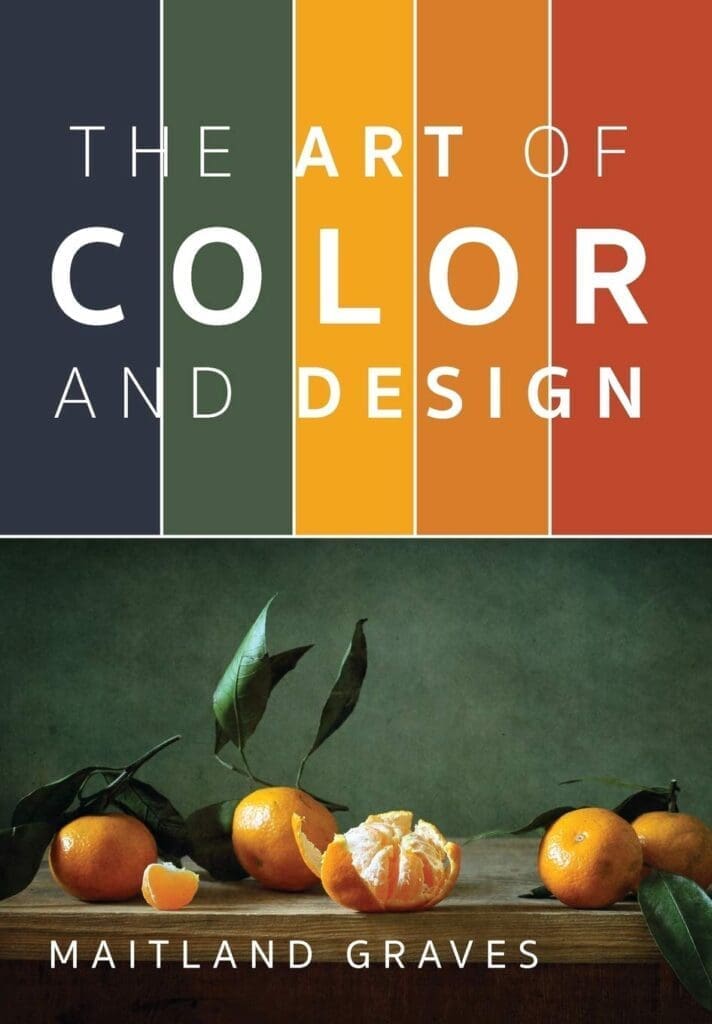
| Author | Maitland Graves |
| Publisher | McGRAW-HILL |
| language | English |
| Book Type | Paperback |
| ISBN-10 | 978-1635610963 |
| Pages | 440 |
The author of the art of color and design is a writer and a painter; he lived from 1902-1978. He won several prizes in exhibitions in the 1930’s periods. He was an art professor teaching art in Pratt Ins 1929-1959; and an art professor at the University of Rhode Island in 1961. The author published also the color fundamentals, TheGravesDesignJudgmentTest, and several articles in the reader’s digest.
This publication serves various audiences. Students planning to study arts, sculpture, architecture, decoration, and interior design. Any person working in the fields of visual arts like graphic design, online and paper advertisements, publishing houses workers working on book covers, and newspaper 2d designers. Art critics who have the basics knowledge in the art of color could benefit from this book. People who want to build understanding about time arts and space arts for general interest.
The art of color and design book theme is centered on three major concepts. First, how is artwork is built and how to build the sense of artwork through the description and meaning of the elements of design (line, direction, shape, size, texture, value, color) accompanied by many artwork examples. Second, what are the principles of design, and how they are used in building artwork? How these principles are used to build artwork that simulates the various human life situations affected by the political and socio-economic factors because design principles are natural forces like gravity. How painters divert from these principles in creative ways to introduce art styles and movements. Third, the analysis of the design elements, for example, Line could mean direction, rigidity. A curved line could mean smoothness, softness, and flexibility. A circle means continuity, endless, and centricity. The author presents in this chapter psychological research and studies concerning the analysis of the design elements. And finally, the author presents his method of design judgment test.
In the first couple of lines of the introduction, the author declares that art is the outcome of the ideological clashes of the political, socio-economic standards conflict. Design principles are not clarified or integrated on a common experience, and common understanding basis. Time arts and space arts are built on principles of order based on the aesthetic validity of their psychological and sociological origin in human behavior. This book is the study of universal order principles of all forms.
The author supplemented his three chapters with psychological art studies about the subject of art of color he is discussing and illustrating. The book is an academic book that provides the path to learn how art of color is built, how to build the artwork from the design elements, how to analyze and criticize artwork. The author has thankfully provided a huge amount of art, graphic, and even architectural work in all his chapters with a deep explanation that represents the deep experience he holds in the artwork.
The writer has brilliantly built his book chapters and connected them to take the reader from the essential beginning steps to understand art of color – elements of design- to the principles of design and how these principles could be used together to compose a piece of art – principles of design- to analyzing the design elements to stand on the hidden meaning of the art composed which reflects the conflict in society whether it is social or economic or political ( you can read my book about how to build an indicator to assess the architectural work and the art side of it Here). As the author indicates in his book in many places that elements of design and the principles of design never change, yes I agree, as his descriptions and analysis are still studied and will continue to be relevant always at any time. The author provides many references, illustrations, graphs, images of architectural work, and his method to judge artwork where he describes it in detail within the book.
The book content reflects the title name when the reader skims the book. One could say that art in many cases does not follow any rigid principles and guidelines because artwork reflects the painter’s senses and feelings towards a situation in life. The book index provides accurate details about the book content. A reader could find what he wants to read quickly without going through the full book content. The chapter’s references are from relevant research and studies of the art of color at the time of the book publication.
I read this book in 1988 when I was in the first year of university study of architecture. Because the flow of information from university teachers coming very slow and the continued discussion and request to teachers to provide lectures about the role of art in architecture work, the teachers argued that the student must do the work himself. I searched in the university and other universities libraries for a book about the role of art in architecture. I found this book in 1988 and it was a very good reference to give a student all the principles of artwork to use and reflect in the architecture design.
The author suggests readings
Croce Benedetti, Aesthetics
Kant Immanuel, Critique of aesthetic judgment
George Santayana, The sense of beauty
Be First to Comment